Let me introduce you to our five gardens:
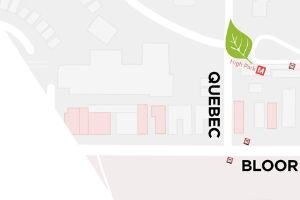
H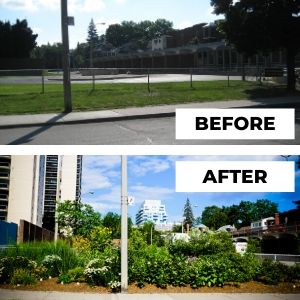
Located on the east side of Quebec Avenue, just outside of the High Park subway station, this garden is a piece of nature in an increasingly developed community. Heavy foot traffic, construction and strong winds are challenges in this space, but with the love and dedication of our volunteers, the garden has thrived. While High Park is known for its large natural area and unique ecosystems, it’s important that natural corridors exist for wildlife to move between these larger green areas. Our garden, filled with common milkweed (Asclepias syriaca), black-eyed Susans (Rudbeckia hirta) and many more flowering species, is the perfect stop-over point for monarch butterflies and other important pollinators.

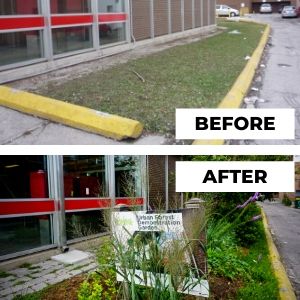
Bathurst Garden
This garden, right next to the Markham Street entrance to the Bathurst subway station, has completely transformed an unused space into a mini-urban forest oasis! Sometimes, it is hard to see the sign at the entrance of the garden because the switchgrass (Panicum virgatum) grows so tall! Once you get your bearings you will be able to see wild chives (Allium schoenoprasum) and wild geranium (Geranium maculatum) flourishing. If you have a powerful nose you might also notice the Virginia mountain mint (Pycnanthemum virginianum) that grows here. Keep walking and you will see that this garden stretches all the way around the subway station entrance where you can see the only swamp white oak tree (Quercus bicolor) we have in any of our gardens. Who knew there was this much biodiversity in the heart of the city?
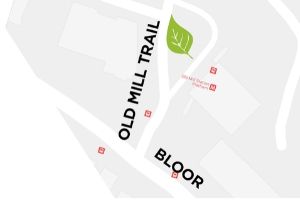
Old Mill Garden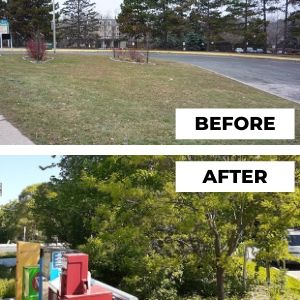
Our Old Mill garden is located on the traffic island just outside of the Old Mill subway station. With the relatively large space and low foot-traffic, larger species like Freeman maple (Acer freemanii) and honey locust (Gleditsia triacanthos) are thriving here. Also, this garden is a buffet for local songbirds including the fruit of the serviceberry tree (Amelanchier laevis) on the northwest corner of the garden which ripens in late June to early July.
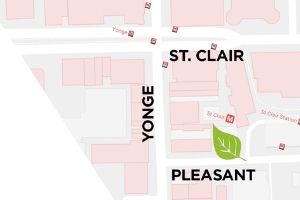
St. Clair Garden 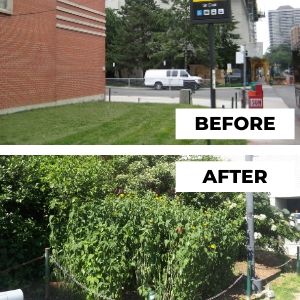
Located along Pleasant Boulevard, outside of the St. Clair subway station, this is our garden that won’t stop growing! We don’t know what it is about this space, but our plants reach new heights here. The pasture rose (Rosa Carolina), which rarely grows above four feet, towers over our Garden Stewards by the end of the summer. You can also get lost among the sweet oxeye (Heliopsis helianthoides) that easily grows above a metre.

Spadina Garden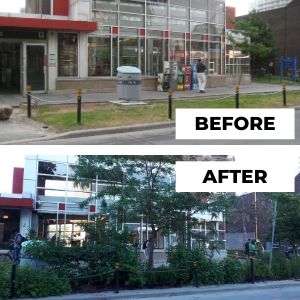
Our Spadina garden is located on Walmer Road just outside of the Spadina Subway entrance. Coined as “the little garden that could,” this garden has overcome a lot of challenges. It receives the most foot and vehicle traffic, is near construction sites and, since it is relatively small this plot of land, it doesn’t have as much soil volume in general. Also, during the winters it has to contend with large amounts of road salts that degrades the soil quality. All these urban stressors make it difficult for plants to establish themselves. Yet, over the years, our Garden Stewards have dedicated themselves to improving the health of this garden by introducing compost and mulch. Now, there are over a dozen native plant species that call this space home. Hopefully this piece of nature, in one of the busiest areas of Toronto, demonstrates that, with a little bit of love and proper care, native species can thrive in our cities.
In just ten years our Urban Forest Demonstration Gardens have grown into flourishing green spaces. They highlight the beauty and importance of having native plant species in our city, while enhancing our communities. Through our #BackyardBiodiversity campaign, they demonstrate the connection between the urban forest and local wildlife. Take some time to learn more about our Urban Forest Demonstration Gardens and meet the one closest to you!
If you are interested in helping tend one of our gardens, register to become a LEAF volunteer here.
Brian Millward is the Stewardship Coordinator at LEAF
The LEAF Urban Forest Demonstration Gardens are supported by Ontario Power Generation and the Toronto Transit Commission.
The #BackyardBiodiversity campaign is a partnership initiative with the Toronto Wildlife Centre and is supported by Ontario Power Generation.
